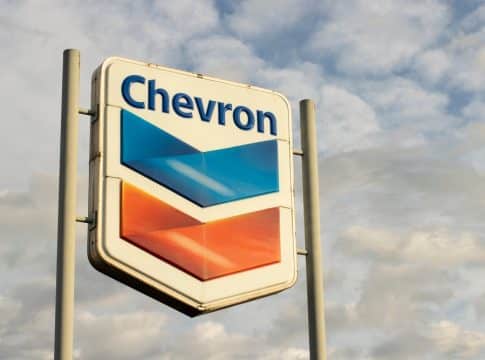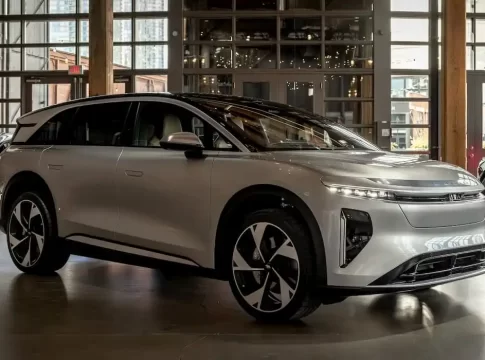Chevron Reports Lower Q2 Earnings! What About Its Emissions?
Chevron, the leading oil and natural gas giant’s Q2 results indicated a decline in performance. The company’s profits fell due to operational and market challenges, reflecting the difficulties it faced during the quarter. However, its global production increased. But how about its emissions and zero goals? Let’s discover
Chevron’s Profits Decline Amid Production Growth
Chevron Corporation’s second-quarter 2024 earnings totaled $4.4 billion, a decrease from $6.0 billion in the same period in 2023. Simply put, the company’s profit slumped 19% this year.
CEO Michael Wirth said, “This quarter was a little light due to some operational and other discrete items that impacted results.”
This drop reflects reduced margins on refined product sales, the absence of favorable tax items, and adverse foreign currency effects that substantially reduced earnings by $243 million. Adjusted earnings were $4.7 billion ($2.55 per share), compared to $5.8 billion ($3.08 per share) last year.
Despite this, Chevron saw a notable 11% increase in global production, driven by the successful integration of PDC Energy and strong performance in the Permian and DJ Basins. The company also expanded its exploration footprint through agreements in Namibia, Brazil, Equatorial Guinea, and Angola.
In terms of financial activities, Chevron allocated $6.0 billion to shareholders during the quarter, including $3.0 billion in dividends and $3.0 billion in share repurchases. Cash flow from operations remained steady, supported by higher dividends from equity affiliates and reduced working capital.
Looking ahead, Chevron’s upcoming dividend of $1.63 per share underscores its commitment to returning value to shareholders amid operational growth and strategic expansions in key global markets.
Reuters reported that Chevron is counting on the Hess acquisition to secure a foothold in Guyana, which holds the largest oil discovery in nearly two decades. Subsequently, the company also aims for the deal to offset risks from its underperforming oil projects in Australia and Kazakhstan, where operational issues have again affected production and delayed maintenance work into the third quarter.
MUST READ: Chevron Finds Global Carbon Pricing Key for Low-Carbon Investments
Is Chevron’s Emission Reduction Plan Enough?
Chevron plans to allocate $8.0 billion to lower carbon energy investments from 2021 through 2028. This includes renewable fuels, carbon capture, offsets, hydrogen, and advanced technologies to enhance production and supply capabilities Additionally, the company will invest $2.0 billion in carbon reduction projects over the same period.
In 2023, Chevron’s emissions amounted to 745 million metric tons of carbon dioxide equivalent (MtCO₂e). Quite sadly, Chevron’s emissions had been steadily rising.
Image: Annual greenhouse gas emissions released by Chevron from 2016 to 2023 (in million metric tons of CO₂ equivalent)
Chevron’s Net Zero 2050 Aspiration
Chevron aims for net zero upstream Scope 1 and 2 greenhouse gas emissions by 2050 on an equity basis. Achieving this goal hinges on significant technological advances, including commercially viable low- or non-carbon energy sources. It also depends on supportive policies, successful carbon capture and storage negotiations, and the availability of cost-effective carbon credits.
2028 targets to lower the carbon intensity of operations
71 g CO₂e/MJ portfolio carbon intensity (Scope 1, 2, and 3)
24 kg CO₂e/boe (Barrel of Oil Equivalent) oil carbon intensity (Scope 1 and 2)
24 kg CO₂e/boe gas carbon intensity (Scope 1 and 2)
36 kg CO₂e/boe refining carbon intensity (Scope 1 and 2)
With this plan, the oil giant envisions to top the list of carbon intensity mitigators in oil, products, and natural gas.
GHG Emission Management
Chevron actively reduces carbon intensity by refining its portfolio, enhancing operations, and using its Marginal Abatement Cost Curve (MACC) process. It focuses on optimizing carbon reduction opportunities and integrating GHG mitigation technologies throughout its operations. The MACC process has identified over 150 GHG abatement projects.
This year Chevron plans to invest more than $600 million to advance these projects. From 2021 to 2028, Chevron expects to invest approximately $2 billion in these initiatives, aiming for around 4 mts of annual emissions reductions when completed.
The company targets key areas such as energy management, methane management (including venting, fugitive emissions, and flaring), CCUS, and offsets. Supportive policies like carbon pricing and effective carbon reporting are also a part of its GHG reduction protocol.
Chevron’s significant GHG mitigation projects include replacing diesel with alternative fuels in the Permian Basin and cutting 270,000 tons of CO2e since 2020. In France, the Oronite plant’s agreement with BioSynergy will meet 40% of its steam needs with biomass and solid recovered fuel, reducing CO2 emissions by 25,000 tonnes annually.
Combating Methane Emissions
Chevron has set a methane emissions performance goal of 2.0 kg CO₂e/boe upstream methane intensity by 2028. Since 2022, the company has designed new upstream facilities to avoid routine methane emissions. Notably, it has tested 14 advanced detection technologies since 2016, including aircraft-based gas mapping and satellite imaging.
Last year, Chevron contracted GHG Sat to monitor 18 onshore assets globally. Despite progress, accurate methane quantification remains challenging. To overcome these challenges, it has collaborated with third parties to enhance methane detection and measurement. Key partnerships are with Veritas and the Oil and Gas Methane Partnership.
Chevron’s Global Presence in Renewables
By 2030, Chevron targets 100 mbd of renewable fuels, 25 mmtpa in offsets and CCUS, and 150 mtpa in hydrogen production capacity.
Renewable Fuels and Natural Gas
Chevron is advancing its renewable fuels to cut the carbon intensity of transportation. By 2030, Chevron aims for a production capacity of 100 mbd, including renewable diesel and sustainable aviation fuel. It is expanding its renewable diesel capacity with a new project in Louisiana and investing in feedstock development in Argentina.
The company’s renewable natural gas (RNG) projects mainly involve capturing dairy methane and turning it into useful fuel. It has partnered with Brightmark LLC to fund and operate biomethane projects and recently acquired Beyond6, LLC to expand its CNG stations.
A significant achievement in this space is its growing lower-carbon hydrogen and ammonia business. The company is working on the Advanced Clean Energy Storage Project (ACES I) in Utah and developing hydrogen infrastructure in the Gulf Coast region.
CCUS and Emerging Technologies
Chevron’s CCUS profile is quite impressive. Prime projects include Bayou Bend in Texas and the Gorgon project in Australia, one of the largest integrated CCS projects globally. Chevron is also investing in soil carbon projects with Carbon Sync to boost carbon sequestration.
READ MORE: Chevron Allots $26M to Carbon Capture and Storage in Australia
In Nevada, it is investing in geothermal projects with Baseload Capital, marking its entry into low- and medium-temperature geothermal energy. This marks a 100% commitment to reducing carbon emissions across major industries and hard-to-abate sectors,
Overall, the investment plan to achieve its net zero goals looks promising and we hope Chevron’s next quarter will bloom bright!
The post Chevron Reports Lower Q2 Earnings! What About Its Emissions? appeared first on Carbon Credits.



